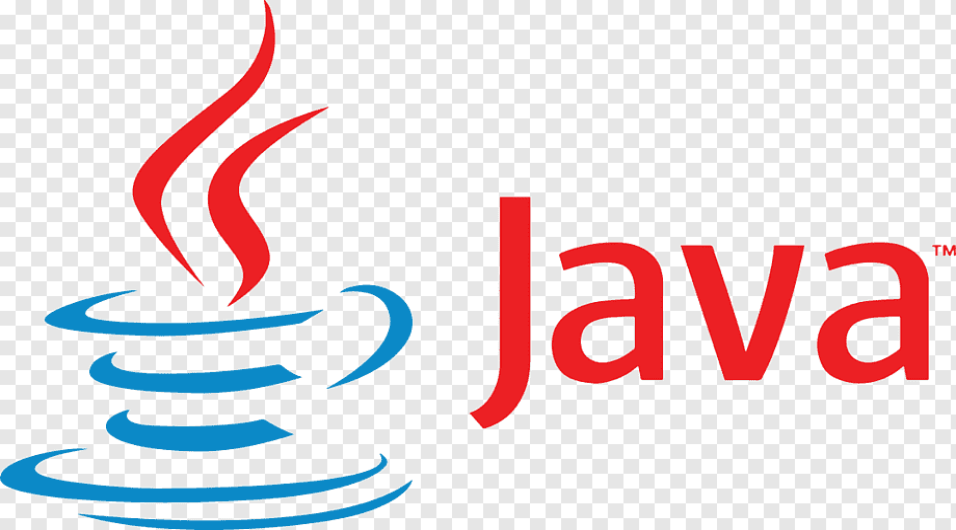
The Evolution of Java Programming Language in Information Technology
A Comprehensive Analysis of its Impact and Development Over Time
The evolution of the Java programming language has been a significant driving force in the field of Information Technology, shaping the way software development is approached and executed. Java, with its origins rooted in the early 1990s, was developed to address the challenges of programming for consumer electronic devices and set-top boxes. Spearheaded by key contributors such as James Gosling and Sun Microsystems, Java was designed with the goal of being platform-independent and secure, incorporating features like automatic memory management and object-oriented programming principles. Over time, Java has evolved to become one of the most widely used programming languages, known for its robustness, scalability, and versatility. Its platform independence has been a key factor in its widespread adoption, allowing developers to write code once and run it on any platform that supports Java. The introduction of significant updates and versions, such as Java SE 8 and Java SE 11, has brought improvements in performance, security, and language features. In the modern landscape of Information Technology, Java plays a crucial role in enterprise-level applications, mobile and web development, and has influenced the development of other technologies and programming languages. Supported by a vibrant community and ecosystem, including major organizations, open-source contributions, and Java User Groups (JUGs), Java continues to thrive and evolve. Looking ahead, the future of Java holds exciting prospects with anticipated advancements in technology and potential influences from emerging technologies like IoT and AI. However, challenges such as maintaining relevance and competitiveness in a rapidly changing technological landscape remain pertinent. This research paper aims to delve deeper into the historical background, key features, current role, community support, and future trends of Java programming language, providing a comprehensive analysis of its impact and development over time.
Historical Background of Java Programming Language
When and why was Java initially developed?
The development of Java was initiated in 1990 by an American company with the vision of creating a language that could become a significant player in the emerging Internet world. The Green team, comprised of James Gosling, Arthur Van Hoff, and Andy Bechtolsheim, spearheaded this project, initially naming the language Oak. The name change to Java was necessitated by copyright issues surrounding the original name. Java was designed to resemble C++ while eliminating some of its more complex and error-prone features and incorporating favorable aspects from languages like Smalltalk. Despite initial skepticism due to past experiences with other object-oriented languages, Java's introduction in 1995 coincided with the rise of the Internet and the Worldwide Web, which significantly contributed to its rapid adoption and success. This strategic timing, coupled with its robust design, enabled Java to mature into a major programming language that supports many facets of the modern software industry.
Who were the key contributors to Java's creation?
In addition to James Gosling, Arthur Van Hoff, and Andy Bechtolsheim, there were several other key contributors whose efforts were instrumental in shaping Java into the influential programming language it is today. For instance, Patrick Naughton, another member of the Green team, played a crucial role in the development of the language and its environment. His contributions helped transition Java from a niche project into a versatile, high-level programming language that supports a wide array of applications beyond web programming. Furthermore, Mike Sheridan's marketing expertise was vital in positioning Java as a competitive technology in the programming landscape. His efforts were part of a broader strategy to ensure Java's adoption across various computing platforms, from desktop applications to enterprise solutions. The expansion and refinement of Java were further enriched by the incorporation of generics, which was proposed by Philip Wadler and others to improve type safety and code reusability. These collaborative efforts highlight the interconnectedness of software engineering, marketing, and academic research in the evolution of Java, emphasizing the importance of multi-faceted contributions to the development of robust and adaptable programming languages. As Java continues to evolve, it is crucial to recognize the diverse expertise that has driven its success and to foster similar collaborative environments for future innovations.
What were the initial goals and design principles of Java?
The initial goals and design principles of Java were intrinsically tied to the desire for a versatile, robust, and secure programming language that could transcend traditional programming boundaries. Initially conceived as a language for interactive television, Java evolved to meet broader needs in the computing world, emphasizing portability, object-oriented architecture, and simplicity. One of the core principles was to create a language that could run on any device, which led to the creation of the Java Virtual Machine (JVM). This innovation allowed Java to achieve platform independence, a key attribute that distinguished it from other programming languages of the time. Additionally, Java's design principles included a focus on security, which was paramount given the rise of the internet and the increasing need for secure web applications. The language was designed with built-in safety features like runtime checks and a security manager to prevent malicious code execution. As Java matured, it became apparent that it was suitable not just for web applications but also for desktop and enterprise solutions, further cementing its versatility and widespread adoption. The foresight of its creators in designing a language that adhered to these principles has ensured Java's enduring relevance in the ever-evolving landscape of programming languages.
Key Features and Innovations of Java
What are the primary features that distinguish Java from other programming languages?
Among the primary features that distinguish Java from other programming languages is its robust memory management and exceptional condition handling capabilities. Java's approach to memory management, particularly through its automatic garbage collection feature, ensures that programmers do not need to manually manage memory allocation and deallocation, which significantly reduces the risk of memory leaks and dangling pointers. This automatic handling of memory not only enhances the efficiency of Java programs but also alleviates the burden on developers to monitor and manage resources actively. Furthermore, Java's strict type-checking at both compile-time and run-time helps in preventing a myriad of errors that could otherwise lead to unpredictable behavior or system crashes. This rigorous enforcement of type safety ensures that code behaves predictably across diverse conditions, thus fostering a more stable and reliable programming environment. These features collectively underscore Java's commitment to creating robust, high-quality software, distinguishing it substantially from many other programming languages that do not offer such comprehensive memory and error management tools.
How has Java's platform independence contributed to its adoption?
Java's platform independence has been a cornerstone of its widespread adoption, fundamentally transforming how developers approach software portability and security. At the heart of this independence is the Java Virtual Machine (JVM), which executes Java bytecode on any platform that has a compatible JVM implementation. This capability has enabled developers to write code once and run it anywhere, eliminating the need to rewrite programs for different operating systems. The JVM's role in containing the program and preventing it from generating side effects outside the system further enhances Java's security, making it a reliable choice for developers concerned about protecting their applications and data. Additionally, Java's bytecode, which is highly optimized, allows for efficient execution by the JVM, thereby improving performance and making Java a competitive option compared to other programming languages. This combination of portability, security, and performance has made Java a versatile tool for developing a wide range of applications, from web applets to enterprise-level software. As a result, Java's platform independence not only facilitates the development of cross-platform programs but also ensures that these programs can be dynamically downloaded and executed on various internet-connected devices, thereby expanding Java's reach and usability.
What are some significant updates or versions of Java, and what improvements did they bring?
One of the most significant updates in the history of Java was the introduction of J2SE 5, which marked a revolutionary shift in the language's capabilities and scope. This release was not merely an incremental update but a profound transformation that expanded Java's power and range, making it a more robust and versatile programming language. The update brought major changes and new features that justified the leap in version numbering from 1.4 directly to 5, highlighting the considerable advancements made. The new features included generics, enhanced for-loop, autoboxing/unboxing, enumerated types, and metadata annotations, all of which addressed previous limitations and introduced new possibilities for developers. Despite this significant leap, Sun Microsystems decided to maintain the internal version number as 1.5 for consistency purposes, which means that while the external version was branded as 5, the compiler recognized it as 1.5. This decision underscores the substantial nature of the update while also maintaining backward compatibility and consistency with previous versions. The enhancements introduced in J2SE 5 played a crucial role in solidifying Java's position as a fundamental programming language in both academic and industrial settings, necessitating ongoing education and adaptation by developers to fully leverage its expanded capabilities.
Java’s Role in Modern Information Technology
How is Java currently used in enterprise-level applications?
Java's versatility in enterprise-level applications is largely attributable to its ability to integrate dynamic functionalities seamlessly. One of the core aspects of this flexibility is the use of specialized Java toolboxes, which can be dynamically "plugged" into systems to extend their capabilities. These toolboxes are packaged in.jar files, facilitating ease of distribution and deployment while ensuring that the application-specific functionality is modular and maintainable. Furthermore, the Java classes that constitute these toolboxes can be dynamically integrated into the system, allowing for real-time adaptability and minimizing downtime during updates or enhancements. This dynamic integration is critical in maintaining the performance and reliability of enterprise-level applications as it enables continuous improvement without disrupting ongoing operations. Additionally, the efficiency of Java in executing these tasks is notably enhanced by the Just-In-Time (JIT) "HotSpot" compilers, which can outperform even optimized C++ native machine code, thereby ensuring that enterprise applications run efficiently and responsively. This combination of dynamic integration, modular packaging, and high execution performance underscores Java's pivotal role in the development and maintenance of robust enterprise-level applications.
What is the significance of Java in mobile and web applications?
The significance of Java in mobile and web applications cannot be overstated as it serves as a cornerstone language in the development of complex information systems using object-oriented design and programming technology. Java's architecture is particularly well-suited for the multitier systems that are common in modern web applications, where various layers of functionality are integrated seamlessly. This multi-tier architecture is essential for accommodating the growing demands of users and businesses for dynamic and robust web services. Moreover, Java's ability to support object-oriented programming paradigms facilitates the creation of reusable and maintainable code, which is crucial for long-term project sustainability. Additionally, the language's consistent updates and extensive libraries make it a versatile choice for developers looking to innovate and stay current with technological advancements. As such, Java continues to be a revolutionary step in computer programming, influencing how new technologies are developed and deployed in both mobile and web domains. To sustain this momentum, educational institutions are increasingly prioritizing Java in their curricula, ensuring that the next generation of developers is well-equipped with the skills necessary to leverage its capabilities. Thus, the pervasive influence of Java in both mobile and web applications underscores its enduring relevance and pivotal role in the digital landscape.
How has Java influenced the development of other technologies and programming languages?
Java's influence on the development of other technologies is profound, particularly in the realms of concurrent and parallel computation. Its multithreaded nature allows developers to write programs that can perform multiple operations simultaneously, which has become a cornerstone in modern software development. This capability has encouraged the evolution of other programming languages and tech frameworks that prioritize efficient, concurrent processing. For instance, languages like C# and Python have adopted similar multithreading and parallel computing paradigms, reflecting Java's foundational impact on these technologies. Furthermore, Java's robust support for distributed computation has extended its influence to the development of technologies designed for large-scale, distributed systems. This includes frameworks like Apache Hadoop and Spark, which rely on Java's architecture to manage data across various nodes in a network. By pioneering these advancements, Java has not only shaped its own ecosystem but has also driven innovation in the wider programming landscape. Therefore, to foster continued growth in technology development, ongoing exploration and enhancement of Java's core features remain critical.
Community and Ecosystem Support for Java
What are some major organizations and communities that support Java development?
Several major organizations and communities are pivotal in supporting Java development, fostering collaboration, and ensuring sustainable practices. For example, the Boyce Thompson Institute (BTI) collaborates on research involving Java-based frameworks, demonstrating the integration of ecological and technological advancements. This collaboration is crucial as it bridges the gap between ecological research and software development, facilitating the creation of sophisticated tools that support environmental conservation efforts. Furthermore, the Center for International Forestry Research (CIFOR) plays a significant role by conducting research as part of the CGIAR Research Program on Forests, Trees, and Agroforestry. Their involvement highlights the intersection of forestry research and software development, emphasizing the use of Java in creating tools that support forest management and agroforestry. Additionally, community participation has emerged as a mainstream approach in mangrove rehabilitation and management in Java. This initiative is supported by organizations like the Ministry of Environment and Forestry, which underscores the importance of involving local communities in ecological projects. By engaging local communities, these organizations not only enhance the effectiveness of environmental conservation efforts but also promote sustainable livelihoods, demonstrating the multifaceted benefits of community-driven approaches in Java development.
How do open-source contributions influence Java's evolution?
Open-source contributions have significantly influenced the evolution of Java, transforming it into a robust and versatile programming language. These contributions have democratized the development process, allowing a community of users to write applications that were previously the domain of specialist programmers, thereby reducing the development and support time substantially. The collaborative nature of open-source projects has fostered a more diverse ecosystem, enabling the rapid identification and resolution of bugs, the addition of new features, and the enhancement of existing functionalities. This open collaboration has not only accelerated Java's development but also enhanced its adaptability to various domains, including web development, mobile applications, and enterprise solutions. Moreover, the shared ownership model inherent in open-source projects has cultivated a sense of collective responsibility and community engagement, which is crucial for the language’s continuous improvement and innovation. Consequently, the open-source community's active participation has ensured that Java remains at the forefront of technological advancements, catering to the evolving needs of developers and businesses worldwide. To maintain this momentum, it is essential to continue fostering an inclusive and supportive environment that encourages contributions from diverse groups, thereby ensuring Java's ongoing relevance and dynamism in the ever-changing landscape of technology.
What role do Java User Groups (JUGs) play in the technology's growth and dissemination?
Java User Groups (JUGs) play a pivotal role in the growth and dissemination of Java technology by fostering a collaborative ecosystem that supports both novice and seasoned developers. These community-driven organizations serve as a platform for knowledge exchange, skill enhancement, and networking, thereby amplifying the collective expertise of their members. By organizing regular meetups, workshops, and conferences, JUGs provide an environment where developers can stay updated on the latest advancements, best practices, and emerging trends in Java technology. This collaborative learning environment not only enhances individual skill sets but also contributes to the broader Java ecosystem by accelerating innovation and problem-solving capabilities through shared experiences and insights. Moreover, JUGs often collaborate with industry leaders and educational institutions to bridge the gap between theoretical knowledge and practical application, thus ensuring that the community remains at the forefront of technological advancements. This symbiotic relationship between JUGs and the wider Java community underscores the importance of grassroots movements in driving technological progress and sustaining the relevance of Java in the ever-evolving landscape of software development.
Future Trends and Prospects for Java
What are the anticipated advancements in Java technology?
One of the most significant advancements anticipated in Java technology is its growing role in High Performance Computing (HPC). The inherent characteristics of Java, such as built-in networking and multithreading support, make it an appealing option for applications requiring extensive parallel processing and multi-core cluster architectures. This rising interest is not confined to theoretical advantages alone; the continuous improvements in Java Virtual Machine (JVM) performance play a critical role in making Java a viable alternative for both sequential and parallel applications, thus bridging the performance gap traditionally dominated by native languages. Moreover, the increasing adoption of Java in large-scale or Grande applications further underscores its potential in the HPC domain. Despite the modest scale of some projects, the collective focus from industry and academia on Java's capabilities in HPC suggests a promising trajectory for its development. However, to fully capitalize on these advancements, it is crucial to bolster awareness of ongoing research projects and their findings, which will drive deeper integration and optimization of Java in HPC environments. Therefore, the future of Java technology in HPC hinges on a multifaceted approach that includes both technological enhancements and strategic dissemination of research insights.
How might emerging technologies (e.g., IoT, AI) shape the future of Java?
The integration of emerging technologies such as the Internet of Things (IoT) and Artificial Intelligence (AI) is set to significantly impact the future landscape of Java. One of the foremost areas where Java stands to benefit is its application in multi-core cluster environments, which is increasingly becoming a standard in various industries. The language’s robustness and versatility make it an attractive choice for developing complex IoT ecosystems and AI-driven applications. This is not just conjecture; current trends in the industry reveal a growing adoption of Java for mission-critical applications, particularly in sectors that demand high reliability and performance. Moreover, the academic and industrial sectors are increasingly focusing on Java’s potential in these emerging fields, further bolstering its prospects. The use of Java in Android apps and its widespread acceptance in enterprise solutions demonstrate its adaptability to new technological trends and its capacity to support future innovations. As these technologies evolve, Java’s role is likely to expand, necessitating continual improvements and adaptations to meet the demands of new applications. Therefore, ongoing investment in Java development, both in terms of research and practical implementation, will be crucial in harnessing its full potential in the era dominated by IoT and AI.
What challenges does Java face in maintaining its relevance and competitiveness?
Java faces several challenges in maintaining its relevance and competitiveness in the rapidly evolving technology landscape. One significant challenge is adapting to the trend of multi-core processors and distributed computing environments. Although Java has been traditionally robust in single-threaded applications, the shift towards multi-core clusters and parallel processing demands more sophisticated concurrency models and frameworks, which can be complex to implement and optimize. Another key issue is the proliferation of alternative programming languages that offer more modern features and syntactic simplicity. Languages like Python and Go have gained traction due to their ease of use, leading some developers to move away from Java despite its established presence in enterprise environments. Furthermore, the weakly-typed nature of Java presents difficulties in applying many established analysis techniques that work effectively on statically typed languages, posing a challenge for developers who need rigorous type checking and reliability. Despite these hurdles, Java's adaptability and widespread use in various domains, including Android development and financial technologies, continue to attract significant attention from both industry and academia. To remain competitive, ongoing efforts to modernize Java's language features and improve its performance in multi-core and distributed environments are essential. Additionally, fostering a more vibrant ecosystem of tooling and community support will be crucial in ensuring Java's sustained relevance in the ever-changing technological landscape.
The evolution of the Java programming language in information technology has been a remarkable journey, as highlighted in this comprehensive analysis. From its inception as Oak by the Green team to its widespread adoption across various computing platforms, Java has solidified its position as a major player in the modern software industry. The strategic timing and robust design of Java, coupled with the contributions of key individuals like James Gosling, Arthur Van Hoff, and Andy Bechtolsheim, have been instrumental in shaping the language into what it is today. Java's platform independence, facilitated by the Java Virtual Machine (JVM), has revolutionized software portability and security, setting it apart from other programming languages. Despite facing challenges such as the emergence of alternative languages and evolving technological landscapes, Java continues to adapt and thrive, particularly in enterprise-level applications and distributed systems. The incorporation of features like generics and bytecode optimization has enhanced Java's performance and competitiveness, further solidifying its relevance in the programming world. Moving forward, continued exploration and enhancement of Java's core features, collaboration within the Java community, and adaptability to new technologies will be essential to ensure Java's sustained relevance and growth. The collaborative efforts of software engineers, marketers, and researchers have been pivotal in Java's evolution, emphasizing the importance of multi-faceted contributions in the development of robust programming languages. As Java expands its role in areas such as High Performance Computing (HPC) and enterprise solutions, maintaining a focus on security, versatility, and adaptability will be key to navigating the ever-evolving landscape of programming languages and technology.







